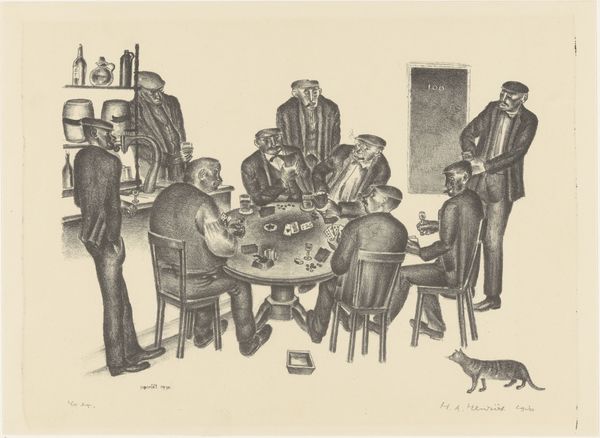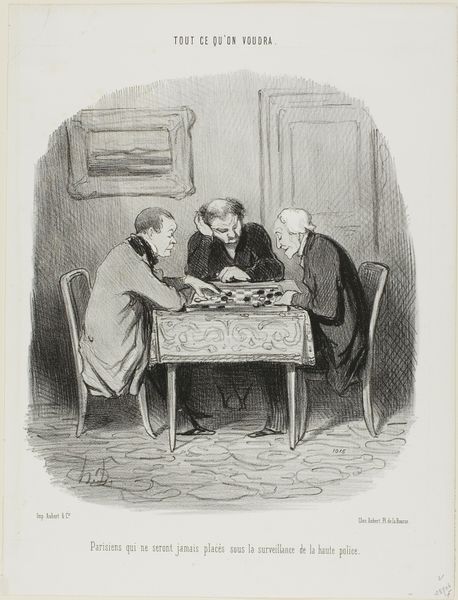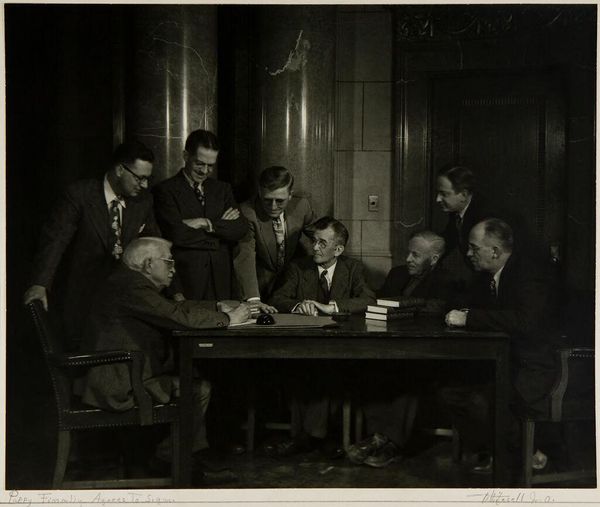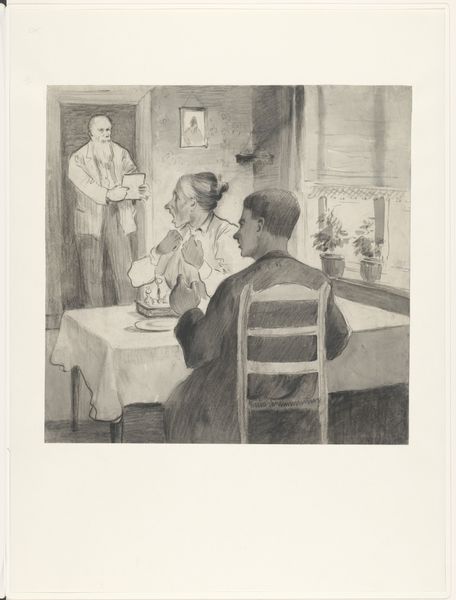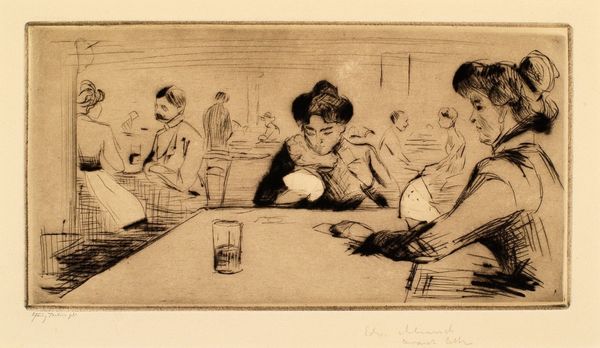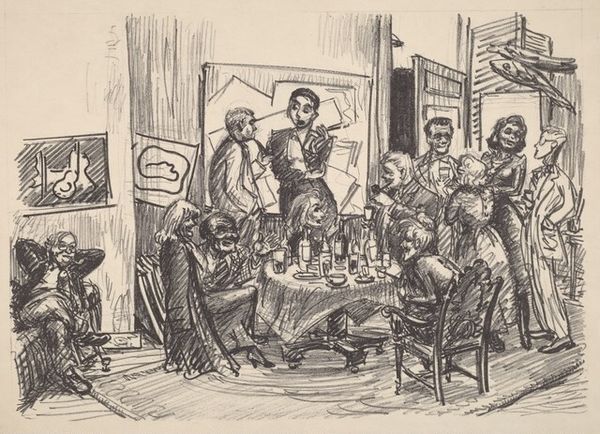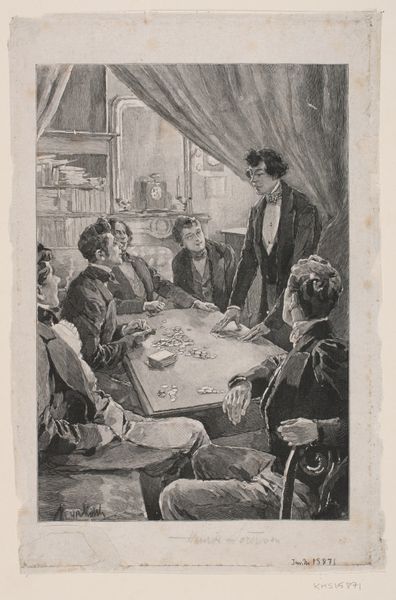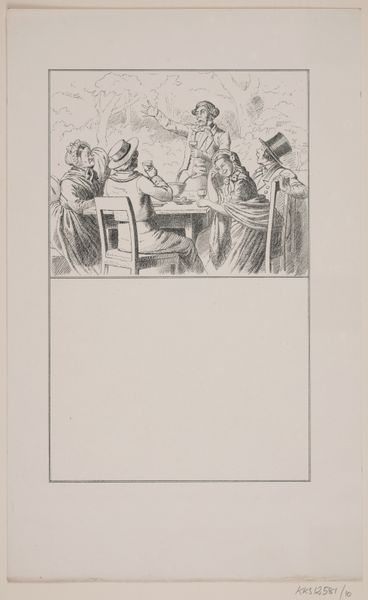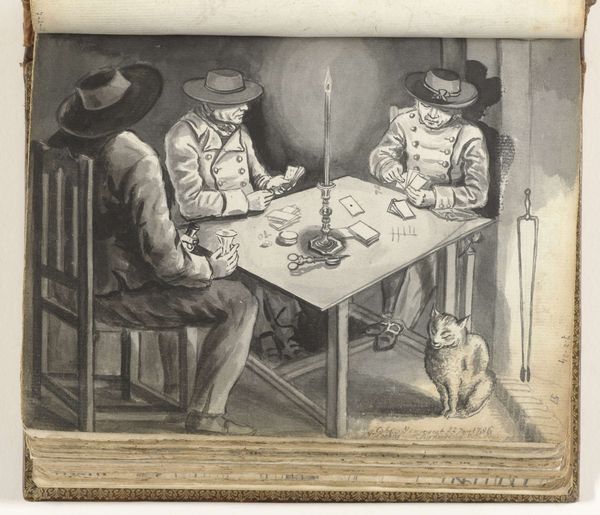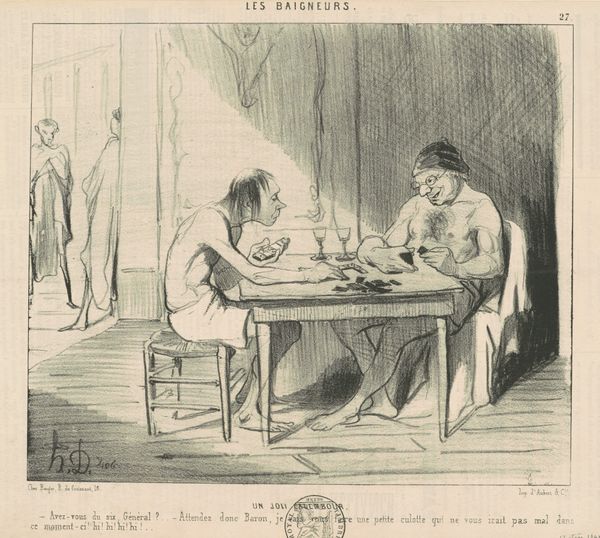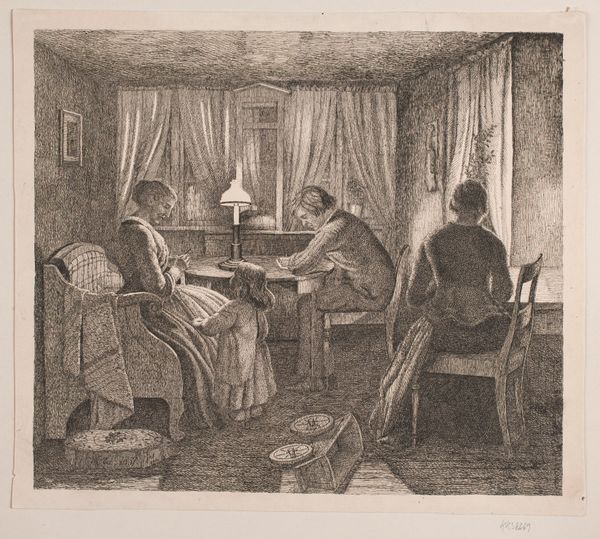
drawing, print
#
portrait
#
drawing
# print
#
harlem-renaissance
#
figuration
#
social-realism
#
portrait drawing
#
genre-painting
#
history-painting
#
regionalism
Dimensions: Image: 12 3/4 × 16 1/8 in. (32.4 × 41 cm) Sheet: 15 5/16 × 19 1/8 in. (38.9 × 48.6 cm)
Copyright: Public Domain
Curator: Before us is Charles Alston's print "Stud Poker," created sometime between 1933 and 1943, now held here at the Metropolitan Museum of Art. What’s your initial reaction to it? Editor: It feels tense, almost theatrical. The sharp contrasts of light and shadow really amp up the drama of this supposedly casual game. Curator: Alston created this print during the Great Depression and it offers a window into African American life at that time. Note how he situates the figures—an interplay of closeness and isolation, around a table. Can you elaborate on how the historical and social context inform how we view this piece? Editor: Precisely. Knowing that context helps us understand "Stud Poker" beyond a simple genre scene. These figures, rendered with such intensity, become symbols of resilience amidst economic hardship and racial inequality. The game itself is a potent metaphor for risk, strategy, and survival under pressure. Curator: And it’s worth noting Alston’s grounding in the Harlem Renaissance, with echoes of social realism and regionalism. The setting and clothing read as deliberately chosen signifiers, rooted in lived experience, while also connecting to art historical conventions for depicting working class people in shared cultural pursuits. Editor: I also find the perspective compelling. The figure standing behind, seemingly an observer, perhaps even an enforcer, complicates the dynamics further, suggesting hidden power structures are in play, even within a community portrayed as playing a seemingly informal game. Curator: It prompts us to reflect on representation itself—who is seen, how, and why. How Alston captures the nuances of their facial expressions and gestures tells of far more than simple gambling—they hint at shared struggles and individual anxieties, challenging stereotypes by asserting their humanity. Editor: Absolutely. Considering "Stud Poker" alongside Alston's other work gives even deeper insight. We are invited to see this gathering as an assertion of presence and identity within larger, often hostile social landscapes. This is where history really amplifies the resonance of an artwork. Curator: This print also demonstrates Alston’s sophisticated engagement with genre conventions. His work operates in a long lineage of visual depictions depicting everyday life while investing it with social and political weight. Editor: Yes, the work stands as an eloquent reminder that art is not made in a vacuum but carries echoes of collective memories and aspiration, inviting continuous conversations about community, representation and the complex relationships between play and perseverance. Curator: Precisely. Hopefully our reflections shed new light on the depth and complexity contained within this piece. Editor: Indeed, a rewarding journey through "Stud Poker".
Comments
No comments
Be the first to comment and join the conversation on the ultimate creative platform.
